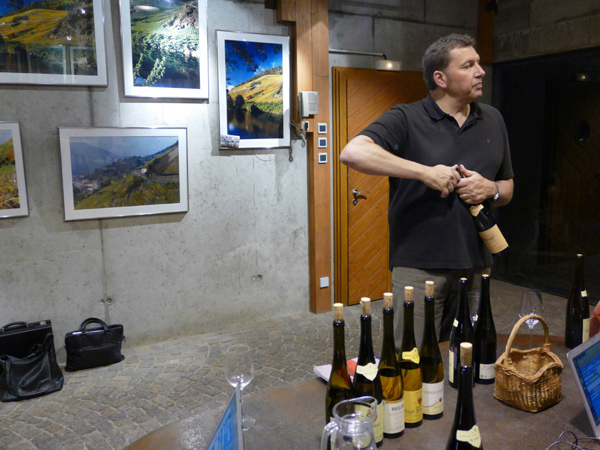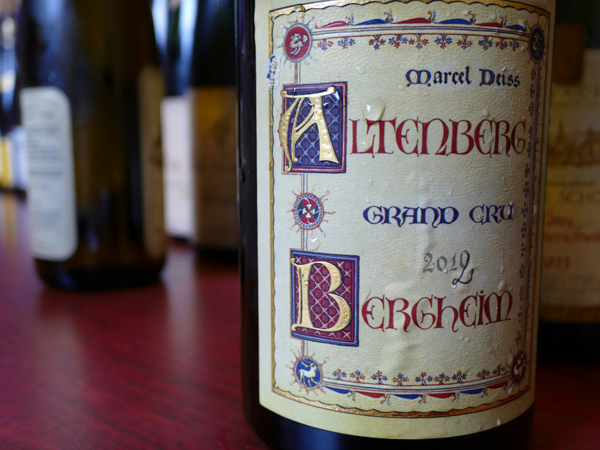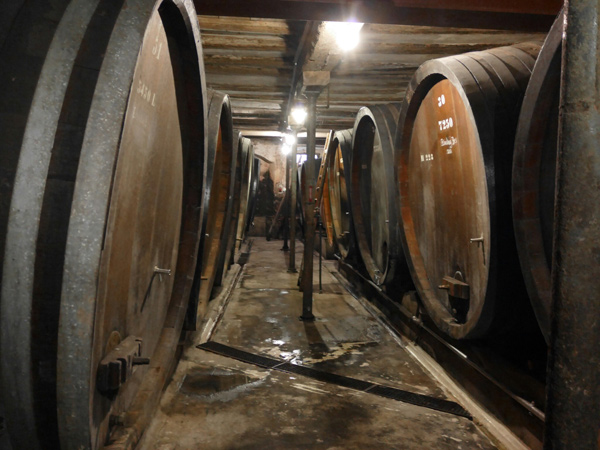Tasting Report: More Than 650 Wines Rated from Alsace

This year I tasted more than 650 wines from Alsace and I found more than two thirds outstanding quality – i.e. they scored 90 points or more.
It was an exciting project that I did in conjunction with Lalique, the French crystal house that produces my range of glasses under the Lalique 100 Points by James Suckling line. Lalique is based in Alsace in the town of Wingen-sur-Moder. We printed a bilingual (French and English) guide to the wines of Alsace that will be posted later in the week on the site and was distributed in hard copy mostly in France. More than 3,000 copies were printed.
The best wines of Alsace are truly soulful wines expressing the complexity of soils and microclimates throughout the region. Moreover, they are crystal clear in their definition and drinkability, making them wines for all occasions. I am still most convinced by riesling that seems to be the best medium for communicating the character of wines from the best vineyards of Alsace; however, pinot noir is a grape type that shows great quality now, particularly with small winemakers who want to prove they can compete with nearby Burgundy and the rest of the world that makes high quality pinot noir.
Check out my notes below as well as a short primer on Alsace wines written by French sommelier Iltis Romain, who helped organize my tastings as well as the massive wine list at the new luxury hotel and restaurant in Alsace, Villa René Lalique. Please note that a number of wines rated are not yet released.
A Short Primer on Alsace and Its Wines
Alsace is a small French wine region spread over about 16,000 hectares. Located in the east of France, the region produces a wide diversity of wines with only a proportion that are called “Grand Cru.” The designation indicates a classified location, or “lieu-dit” in French, that follows strict rules of production such as low yields (less than 55hl/ha) and that shows a great sense of origin. The wine therefore fully expresses the identity of its terroir that can speak for itself during tastings.
Soils here are very diversified and display an array of geological eras. The rise of the Alps mountain range led to the collapse of what we called today the Rhine basin. This phenomenon topped with natural erosion allowed the geological layers to reach the surface and to blend. This is why in Alsace, we can find metamorphic rocks such as granite, sandstone, schist and volcanic rocks along with sedimentary rocks such as limestone, marl, clay and loess in the same vineyard. This can be visible to the naked eye when strolling into the vineyards.
 The winemaker also benefits from a semi-continental climate ideal for wine production. Protected by the Vosges Mountains, the region’s rainfall is one of the lowest in France. The vineyard is mostly south- and east- facing with morning sunshine, allowing maximum sunshine for a perfect ripeness of the berries. The Foehn wind that blows across the valley maintains ideal sanitary conditions and allows berries over-ripeness with the development of botritys cinerea (noble rot).
The winemaker also benefits from a semi-continental climate ideal for wine production. Protected by the Vosges Mountains, the region’s rainfall is one of the lowest in France. The vineyard is mostly south- and east- facing with morning sunshine, allowing maximum sunshine for a perfect ripeness of the berries. The Foehn wind that blows across the valley maintains ideal sanitary conditions and allows berries over-ripeness with the development of botritys cinerea (noble rot).
Alsace’s troubled history and geographical situation led to the planting of a large array of grape varietals. They can be sorted in three categories: the Rhine grapes (riesling, sylvaner white and red); the grapes brought by Romans (gewurztraminer and muscat varietals); and grapes from nearby regions (pinot blanc, gris ou noir and chardonnay [for the cremant wines] from Burgundy and Auxerrois with Lorraine).
Only four of these grapes are identified as “noble” in Alsace: riesling, pinot gris, muscat and gewurztraminer. Thanks to global warming, pinot noir is now a serious grape offering red wines with constant improvement.
 As in other French wine regions, monks and lords have strictly defined vineyard parcels over time. They generally reflect the geographical unity of the vineyard. Some classified locations or “lieux-dits” have acquired a qualitative reputation that traveled through time.
As in other French wine regions, monks and lords have strictly defined vineyard parcels over time. They generally reflect the geographical unity of the vineyard. Some classified locations or “lieux-dits” have acquired a qualitative reputation that traveled through time.
However, the region's worldwide recognition has been slowed down due to the wars of the 20th century. It was only in 1975 that Schlossberg of Kaysersberg was identified and the AOC Alsace Grand Cru was created. Nowadays, there are 51 “lieux-dits” that are “Grand Cru” classified. Each of them has its own terroir and identity that it tries to reveal in its wines.
Forty years after their creation, the grands crus wines have shown the diversity that Alsace can offer. These wines represent best expressions and are the flagship of Alsace’s terroir. The grape becomes a vessel that expresses the identity and complexity of the classified grand cru “lieu-dit.” The geological diversity offers a large array of wine profiles and flavor expressions.
A bright future lies ahead of Alsace with the implementation of 1er cru (or first growth) “lieux-dits” following the Burgundy appellation system; one step further in the awareness of the numerous possibilities that Alsace vineyards can offer. The only thing missing nowadays is a way to communicate this system and the uniqueness of the Alsace vineyards.
ILTIS Romain
M.O.F. Sommelier 2015
Meilleur Sommelier de France 2012
Photos from top to bottom: Olivier Humbrecht of Zind-Humbrecht; Terroir driven wines of Marcel Deiss; Old cellar in Alsace.